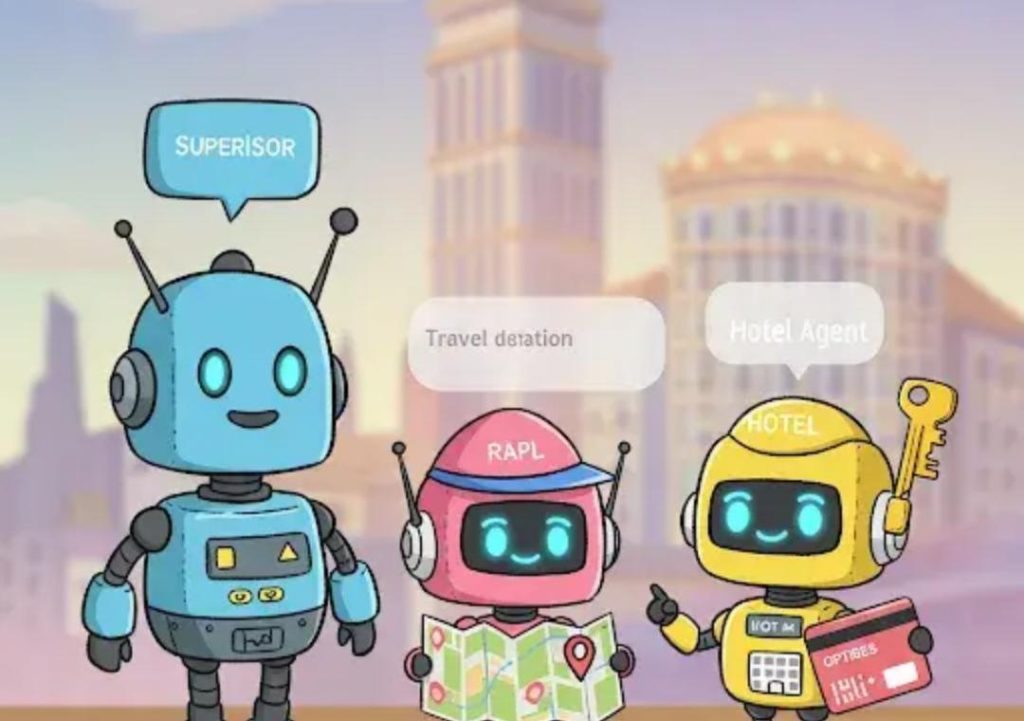
Multi-Agent Collaboration Mimics Real Team Dynamics
In recent years, Artificial Intelligence (AI) has revolutionized the way businesses operate, from automating mundane tasks to making complex decisions. However, relying solely on a single AI agent may not be the most effective approach. Instead, deploying a team of AI agents, known as multi-agent systems, can bring numerous benefits to various industries. In this blog post, we’ll explore the advantages of multi-agent collaboration and how it mimics real team dynamics.
What are Multi-Agent Systems?
A multi-agent system consists of multiple AI agents that work together to achieve a common goal. These agents can be designed to specialize in different tasks, communicate with each other, and collaborate across various activities. This modular setup allows for flexibility, scalability, and adaptability, making it an attractive solution for complex problems.
Key Characteristics of Multi-Agent Systems
- Modularity: Each agent is designed to perform a specific task, which enables easy integration and reconfiguration of the system.
- Autonomy: Agents can operate independently, making decisions based on their local knowledge and goals.
- Communication: Agents can exchange information and coordinate their actions to achieve a common goal.
- Flexibility: Agents can adapt to changing environments and adjust their behavior accordingly.
Benefits of Multi-Agent Collaboration
- Improved Problem-Solving: By combining the strengths of multiple agents, complex problems can be tackled from multiple angles, increasing the likelihood of finding a solution.
- Enhanced Decision-Making: Agents can share their knowledge and expertise, leading to more informed decision-making.
- Increased Efficiency: Agents can specialize in specific tasks, reducing the workload and increasing productivity.
- Scalability: Multi-agent systems can be easily scaled up or down depending on the requirements of the project.
- Resilience: If one agent fails or becomes unavailable, the system can continue to operate with the remaining agents.
Real-World Applications of Multi-Agent Collaboration
- Research and Development: Multi-agent systems can be used to simulate real-world scenarios, allowing researchers to test and validate hypotheses in a virtual environment.
- Validation and Verification: Agents can work together to validate and verify complex systems, ensuring that they meet the required specifications.
- Reporting and Analysis: Agents can collaborate to generate reports and analyze data, providing insights and recommendations.
- Customer Service: Multi-agent systems can be used to create personalized customer experiences, with agents working together to resolve issues and provide support.
How Multi-Agent Collaboration Mimics Real Team Dynamics
- Specialization: Just like human teams, agents can specialize in specific tasks, allowing for greater efficiency and effectiveness.
- Communication: Agents can communicate with each other, just like team members, to share information and coordinate their actions.
- Collaboration: Agents can work together to achieve a common goal, just like human teams, to overcome complex challenges.
- Adaptability: Multi-agent systems can adapt to changing environments, just like human teams, to respond to new challenges and opportunities.
Conclusion
In conclusion, multi-agent collaboration offers numerous benefits for businesses and organizations. By deploying a team of AI agents, complex problems can be tackled from multiple angles, and decision-making can be enhanced. The modular setup of multi-agent systems allows for flexibility, scalability, and adaptability, making it an attractive solution for a wide range of applications. As AI continues to evolve, we can expect to see more innovative applications of multi-agent collaboration, revolutionizing the way we work and live.



